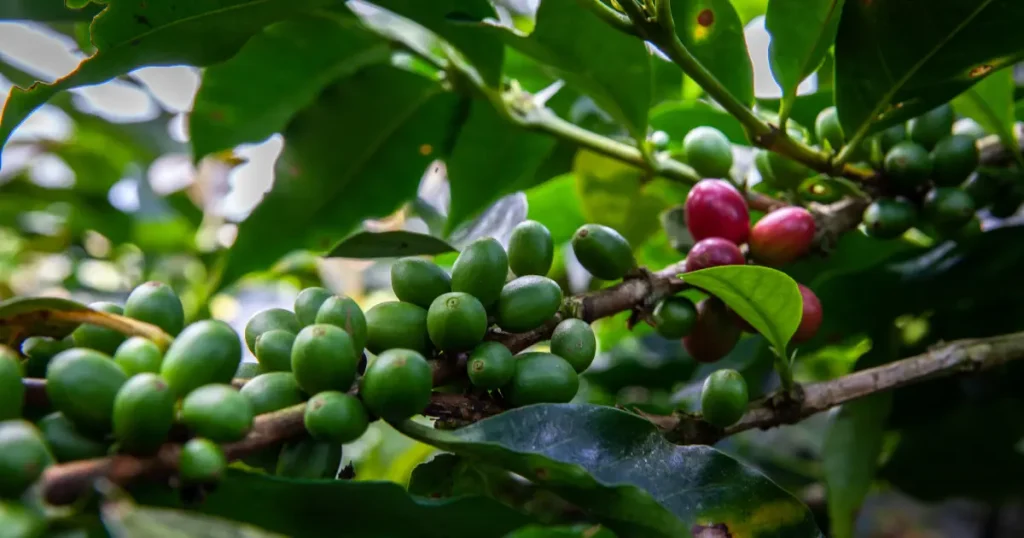The Coffee Chronicles: A History of Coffee in India
Coffee is a beverage that has become an essential part of our daily lives. Many of us cannot imagine starting our day without a cup of coffee. But have you ever wondered about the history of coffee in India? In this blog post, we will take a journey through time and explore the fascinating history of coffee in India.
The History Of Coffee in India:

Chikkamagaluru, a serene hill station nestled in the Western Ghats of Karnataka, holds a significant place in the history of coffee in India. It is said that the Sufi saint Baba Budan, who was on a pilgrimage to Mecca, smuggled seven coffee beans from Yemen and brought them back to India. He planted these beans on the slopes of the Bababudangiri hills in Chikkamagaluru, which now bears his name.
The soil and climatic conditions of Chikkamagaluru were ideal for coffee cultivation, and soon, coffee plantations started to flourish in the area. The local people were quick to adopt the new crop and gradually became skilled in its cultivation. By the 19th century, Chikkamagaluru had become the largest producer of coffee in India, with over 60,000 acres of coffee plantations.
The coffee grown in Chikkamagaluru is known for its unique flavor and aroma. The region’s rich soil, cool climate, and abundant rainfall provide the perfect conditions for the Arabica variety of coffee, which is known for its mild and aromatic flavor. The coffee beans grown in Chikkamagaluru are handpicked, sun-dried, and processed using traditional methods, which lend a distinct character to the coffee.
Today, Chikkamagaluru is a popular tourist destination, attracting visitors from all over the world. The hill station’s coffee plantations offer an immersive experience into the world of coffee cultivation, where visitors can witness the entire process of coffee production, from planting to roasting. The region is also known for its stunning natural beauty, with lush green forests, cascading waterfalls, and breathtaking mountain views.
Over time, the cultivation of coffee spread to other parts of India, including Kerala, Tamil Nadu, and Andhra Pradesh.
The British Era:
The British era in India brought significant changes to the coffee industry. The British recognized the potential of coffee cultivation as a cash crop and established coffee plantations in the Western Ghats. The Western Ghats is a mountain range that runs parallel to the western coast of India and is known for its high altitude, cool climate, and abundant rainfall – ideal conditions for coffee cultivation.
The British introduced new varieties of coffee from Africa, such as the Bourbon and Typica varieties, which were more disease-resistant and yielded better crops. They also introduced modern cultivation techniques, such as pruning and irrigation, which helped to improve the yield and quality of Indian coffee.
The British employed local workers to cultivate coffee on their plantations. These workers were mostly from the lower castes and were often subjected to harsh working conditions and low wages. The British also established coffee trading companies, such as the Madras Coffee House and the Indian Coffee House, which helped to promote the sale and export of Indian coffee.
During the British era, Indian coffee gained popularity in Europe, and exports to countries such as England and France increased significantly. Indian coffee was favored for its unique flavor and aroma, which was a result of the country’s diverse geography and climatic conditions. The popularity of Indian coffee led to the establishment of coffee houses in Europe, which served Indian coffee to the locals.
The British era had a significant impact on the coffee industry in India. The British recognized the potential of coffee cultivation as a cash crop and introduced modern cultivation techniques and new varieties of coffee from Africa. They also employed local workers to cultivate coffee and established coffee trading companies to promote the sale and export of Indian coffee. The popularity of Indian coffee in Europe helped to establish India as a major player in the global coffee market.
The Indian Coffee Industry:
The Indian coffee industry has come a long way since the early days of coffee cultivation in Chikkamagaluru. After India gained independence in 1947, the government recognized the potential of coffee cultivation as an important source of revenue for the country. To promote and regulate the coffee industry, the Coffee Board of India was established in 1948, which played a pivotal role in the development of the industry.
The government’s support for coffee cultivation helped to increase production and improve the quality of Indian coffee. Financial assistance was provided to coffee growers, and efforts were made to encourage the export of Indian coffee. These measures helped to boost the growth of the industry, and by the 1960s, India had emerged as a major player in the global coffee market.

Karnataka is the largest coffee-producing state in India, accounting for over 70% of the country’s coffee production. The state is known for its high-quality Arabica coffee, which is grown in the hills of Chikkamagaluru, Coorg, and Hassan. Kerala is the second-largest coffee-producing state in India, with a focus on Robusta coffee. Tamil Nadu is also a significant producer of coffee, with the Nilgiri district being the major coffee-growing region in the state.
The Indian coffee industry is known for its unique blends and flavors, which are a result of the country’s diverse geography and climatic conditions. Indian coffee is mainly of two types – Arabica and Robusta. Arabica coffee is grown at higher altitudes and is known for its mild and aromatic flavor, while Robusta coffee is grown at lower altitudes and is known for its strong and bitter taste.
he Indian coffee industry has come a long way since the days of Baba Budan. The government’s support for coffee cultivation and the efforts of the Coffee Board of India have helped to establish India as a major player in the global coffee market. The industry provides employment to thousands of people and contributes significantly to the country’s economy. With its unique blends and flavors, Indian coffee continues to be a favorite among coffee lovers around the world.
Today, India is the sixth-largest coffee producer in the world, with a production of around 3.5 lakh metric tonnes annually. The Indian coffee industry provides employment to over 2.5 lakh people, and it generates a revenue of around INR 25 billion. The industry is mainly concentrated in the southern states of Karnataka, Kerala, and Tamil Nadu, which account for over 90% of India’s coffee production.
Unique Features of Indian Coffee:

Indian coffee is known for its unique flavor and aroma. The coffee from Karnataka is mild and aromatic, while the coffee from Kerala is high in acidity and has fruity notes. The coffee from Tamil Nadu has a nutty and chocolatey flavor, and the coffee from Andhra Pradesh is strong and bitter. Indian coffee is also processed using unique methods such as ‘monsooning,’ which involves exposing the coffee beans to the monsoon winds, giving them a distinct flavor.
Conclusion:
The history of coffee in India is a story of perseverance and innovation. From its humble beginnings in the hills of Chikkamagaluru to becoming a major cash crop, coffee has come a long way in India. The Indian coffee industry has a rich history and contributes significantly to the country’s economy. So, the next time you sip on your coffee, remember the fascinating journey of coffee in India.


